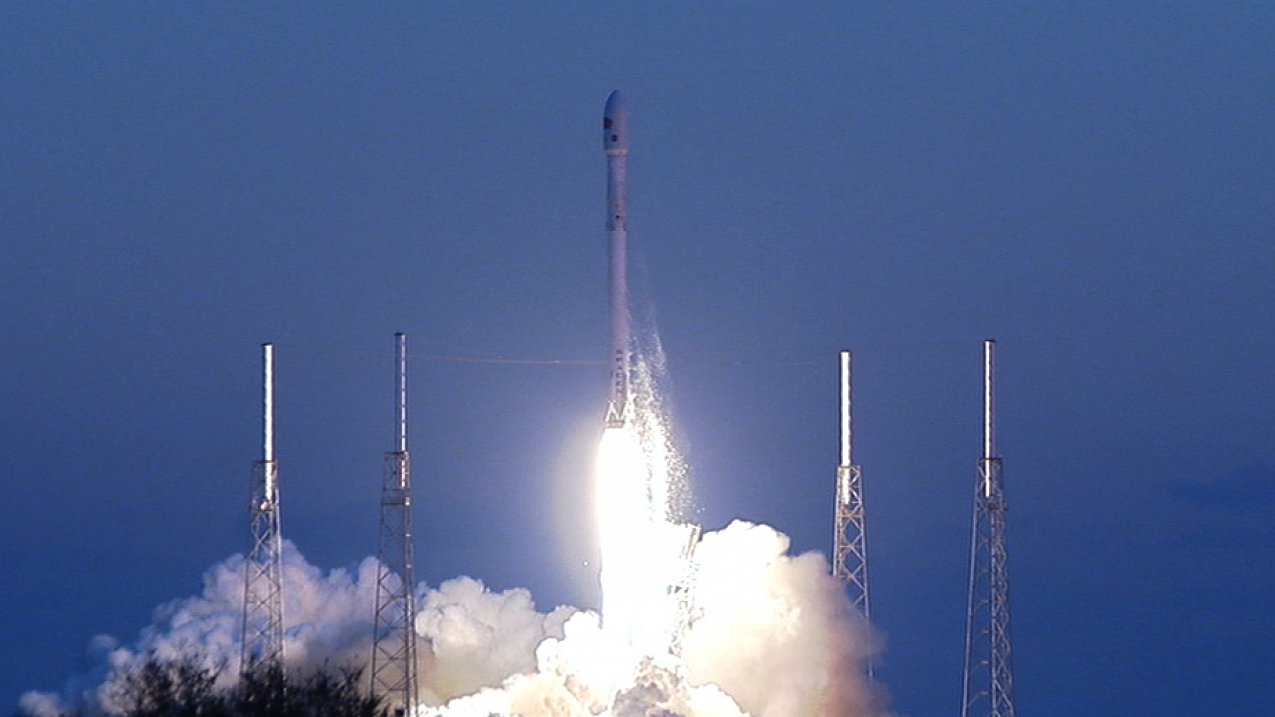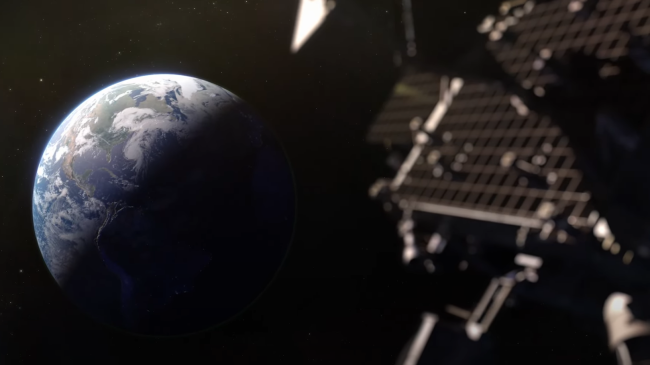DSCOVR will deliver better information for better space weather forecasts
NOAA’s Deep Space Climate Observatory (DSCOVR) lifted off from Cape Canaveral, Florida, at 6:03 p.m. EST on its way to an orbit one million miles from Earth. DSCOVR will give NOAA’s Space Weather Prediction Center (SWPC) forecasters more reliable measurements of solar wind conditions, improving their ability to monitor potentially harmful solar activity.

NOAA's DSCOVR satellite launch. Visit www.nesdis.noaa.gov/DSCOVR for more about NOAA's first deep space mission. (Image credit: NASA)
When it reaches its final destination about 110 days from now, and after it completes a series of initialization checks, DSCOVR will be the nation’s first operational satellite in deep space, orbiting between Earth and the Sun at a point called the Lagrange point, or L1. It will take its place at L1 alongside NASA’s Advanced Composition Explorer (ACE) research satellite, replacing the 17-year old ACE as America’s primary warning system for solar magnetic storms headed towards Earth. Meanwhile, ACE will continue its important role in space weather research.
Watch the DSCOVR launch on NASA's YouTube channel. (Photo: NASA).
Data from DSCOVR, coupled with a new forecast model that is set to come online later this year, will enable NOAA forecasters to predict geomagnetic storm magnitude on a regional basis. Geomagnetic storms occur when plasma and magnetic fields streaming from the sun impact Earth’s magnetic field. Large magnetic eruptions from the sun have the potential to bring major disruptions to power grids, aviation, telecommunications, and GPS systems.
“Located in line between the sun and the Earth, DSCOVR will be a point of early warning whenever it detects a surge of energy that could trigger a geomagnetic storm destined for Earth,” said Stephen Volz, Ph.D., assistant administrator for NOAA’s Satellite and Information Service. “According to the National Academies of Sciences, a major solar storm has the potential to cost upwards of $2 trillion, disrupting telecommunications, GPS systems, and the energy grid. As the nation’s space weather prediction agency, when DSCOVR is fully operational and our new space weather forecast models are in place, we will be able to provide vital information to industries and communities to help them prepare for these storms.”
In addition to space weather-monitoring instruments, DSCOVR is carrying two NASA Earth-observing instruments that will gather a range of measurements from ozone and aerosol amounts, to changes in Earth's radiation.
The DSCOVR mission is a partnership between NOAA, NASA, and the U.S. Air Force. NOAA will operate DSCOVR from its NOAA Satellite Operations Facility in Suitland, Maryland, and process the space weather data at SWPC in Boulder, Colorado, one of NOAA’s nine National Centers for Environmental Prediction. SWPC will then distribute these space weather data to users within the United States and around the world. The data will be archived at NOAA’s National Geophysical Data Center also in Boulder.
NASA received funding from NOAA to refurbish the DSCOVR spacecraft and its solar wind instruments, develop the command and control portion of the ground segment, and manage launch and activation of the satellite. The Air Force funds and oversees the Falcon 9 launch services for DSCOVR. This is the first Falcon 9 mission launched for the Department of Defense. DSCOVR will also host NASA-funded secondary sensors for Earth and Space science observations. The Earth science data will be processed at NASA’s DSCOVR Science Operations Center and archived and distributed by NASA’s Atmospheric Science Data Center.
Contact:
John Leslie
202-527-3504 (cell)



